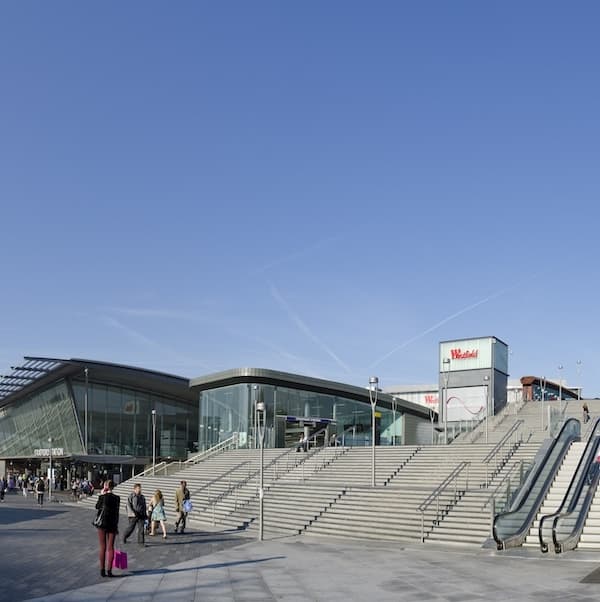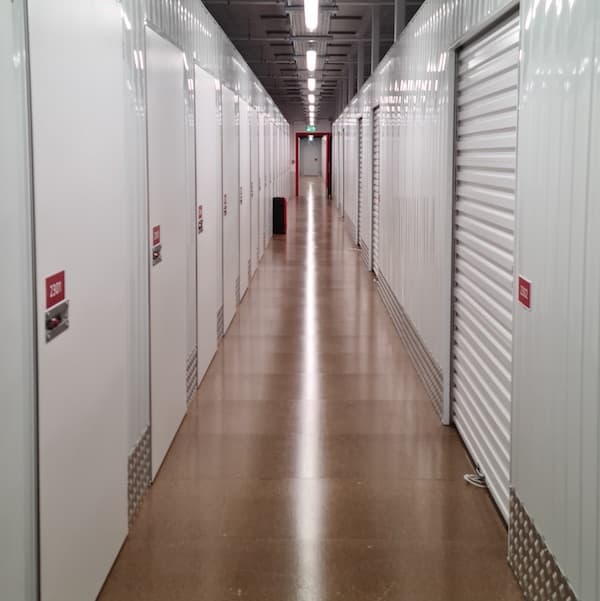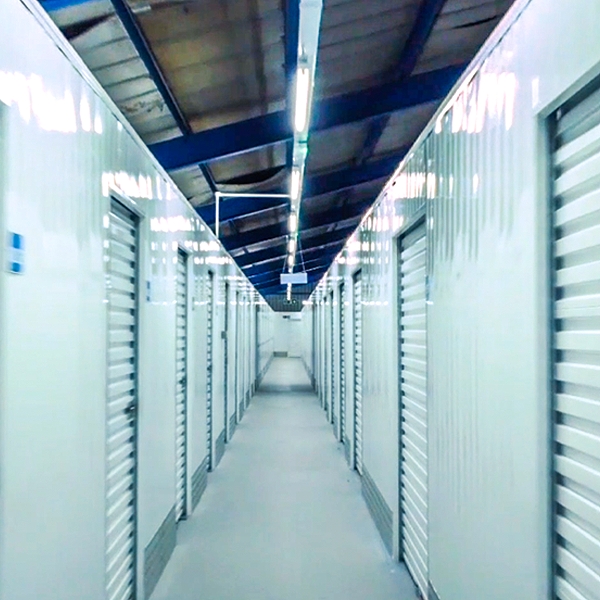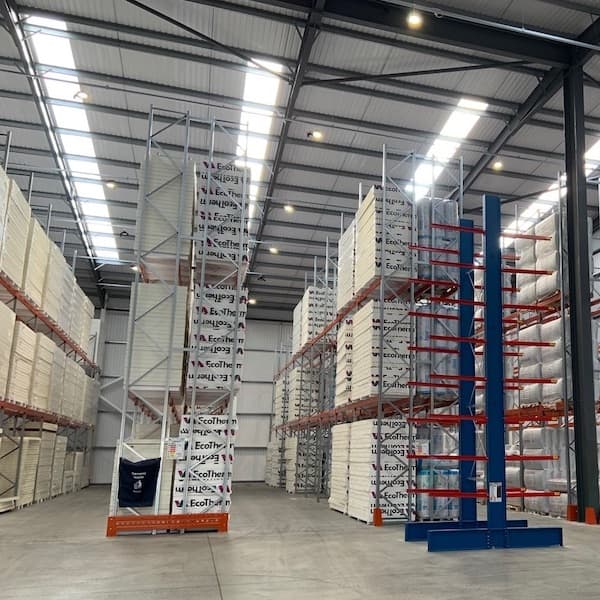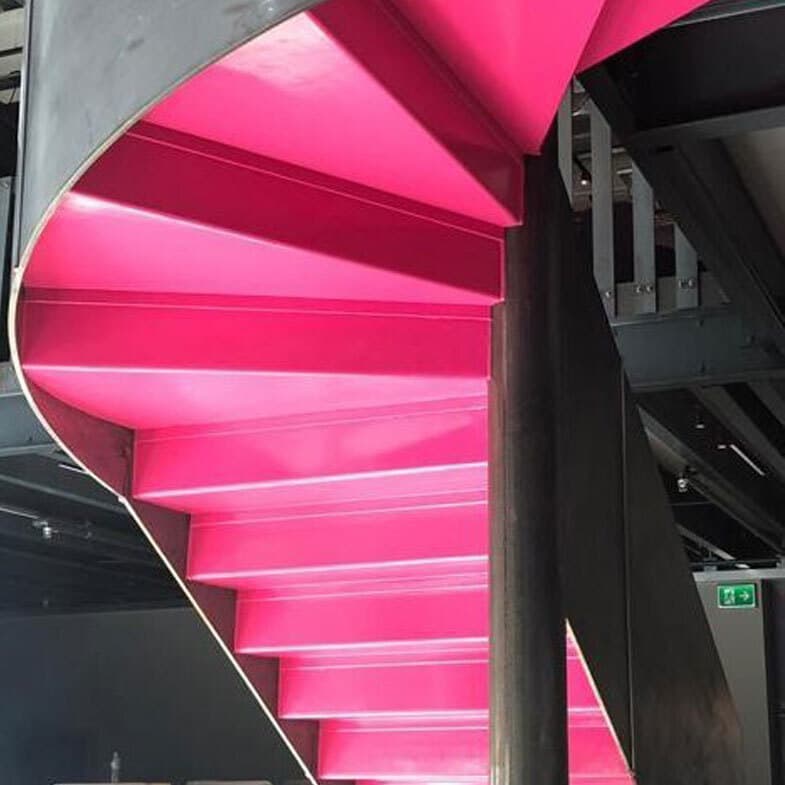- Mezzanine Floors
- Solutions
- Multi-Tier Mezzanines
- Mezzanine Pallet Safety Gates
- Mezzanine Staircases
- Mezzanine Handrails and Balustrades
- Mezzanine Decking
- Fire Protection for Mezzanine Floors
- Mezzanine Lift Shaft Design and Installation
- Resources
- Mezzanine Floor Calculator
- Mezzanine Floor Regulations and Building Control
- Self-Storage Mezzanine Floors
- Self-Storage Units
- Resources
- Self-Storage Site Selection Information
- Calculating The ROI of Self-Storage Conversions
- Planning for Automation in Self Storage
- Racking & Shelving
- Services
- Racking Design
- Racking Manufacture
- Racking Installation
- Racking Inspections
- Retail Racking And Shelving Systems
- Solutions
- Cantilever Racking
- Pallet Racking
- Coil Racking
- Longspan Shelving
- Tyre Racking
- Kimer Racking
- Live Storage Racking
- Drive In & Drive Through Racking
- Clip Shelving
- Mobile Shelving
- Custom Fabrications
- About Us
- USS Case Studies
- Self-Storage Fit-out For Raked Ceiling Building
- Mezzanine And Staircases For Entertainment Venue
- New Mezzanine And Staircases For Major Retailer
- Mezzanine Pallet Safety Gate
- Self-Storage Fit-Out Project For Brand New Facility
- Warehouse Racking, Wire Mesh & Shelving for New Warehouse
- Self-Storage Partition System & Components Installation
- Self-Storage Store Mezzanine And Staircases
- Multi-Tier Mezzanine For Logistics & Distribution Facility
- Warehouse Plant Platform
- Self-Storage Facility Space Expansion
- Mezzanine Floor For Distribution Warehouse
- Bespoke Feature Staircase & Mezzanine
- Single Level, Multi-Use Mezzanine
- Mezzanine For A New Building
- Mezzanine Floor For Plumbing Supplies Warehouse
- New Racking System and Mezzanine Floor
- Car Park Conversion To Self Storage Facility
- Pallet Racking and Cantilever Racking For Warehouse
- Two Mezzanine Floors For Self-Storage Facility In Birmingham
- Our Accreditations
- Contact Us
- USS Case Studies
- Small and micro businesses – between 10,000 kWh and 35000 kWh per year for electricity and gas
- Medium-sized businesses – between 60,000 kWh and 115,000 kWh per year
- Large companies – approximately 155,000 kWh per year
The Latest Blogs From USS
Measuring The Environmental Impact Of A Mezzanine Floor
read

Before looking into the question of the impact which a mezzanine floor can have on the carbon footprint of a building, it's worth setting out briefly why this matters so much.
On a fundamental level, the abstract notion of a carbon footprint equates to the amount of energy a building uses and, therefore, the amount paid for that energy. This issue impacts businesses of every size and type in the UK. Available UK government figures for average household energy consumption show around 3760kWh per year. However, business use dwarfs this figure, which comes in as follows:
Where are We Now - And Where are We Headed?
The British Retail Consortium (BRC), as part of their Climate Action Roadmap for the retail industry in the UK, published a study in 2022 which, as well as setting out steps to take toward achieving Net Zero, looked at the growth of UK warehousing sector and the carbon footprint of that sector. It found that, between 2015 and 2021, the number of warehousing units in the UK grew by 32% and that the sector as a whole accounted for 8.1% of national energy use. To put that figure into perspective, retail in the UK accounts for 17.1% of all non-domestic energy use.
Consumer Focus Reaches Further than the Retail Destination
A similar study from the BRC, focussing solely on the retail sector, highlighted the degree to which reducing the carbon footprint of a retail operation is a key driver of profits. It included figures stating that 81% of customers actively plan to buy more eco-friendly products, and 72% want more information on the climate impact of their foods. As the consumer focus on eco-friendly policies grows, it will reach beyond merely the retail destinations people visit and further reach every part of the supply chain.
More than this, businesses will want to demonstrate that the warehouse and logistics partners they work with and the manufacturers of the products are doing their bit to keep the lifetime carbon footprint of any given item lower. The same report also quoted a Carbon Trust figure stating that a 20% cut in energy costs represents the same bottom-line benefit as an increase in sales.
Finally, and looking at the topic on a more prosaic, day-to-day basis, the Retail Gazette published a report in March of 2023 looking into the drastic steps several well-known retailers had to take to reduce energy bills. Examples cited included Morrisons, Co-op and Waitrose dimming the lights in their stores, Currys reducing the brightness of display TV sets, and Aldi fitting see-through doors on fridges to ensure more cold air is trapped inside. All of which may seem some way from the topic of installing a mezzanine floor into a building. However, they underline why businesses in the warehousing, retail and industrial sectors should consider doing so. It's one of the positive steps they can take toward bringing their carbon footprint and energy costs down while burning their eco-credentials in the opinion of customers and partners.
Measuring Value Needn't Stop at Materials and Installation
To date, articles looking at the carbon footprint of a mezzanine floor have tended to focus on the construction and installation of the floor – i.e., the materials used and the energy required to manufacture the various components – and stopped when the mezzanine floor became operational. However, this focus doesn't calculate a mezzanine floor's lifetime carbon footprint, as it fails to account for the many ways a mezzanine floor can help a business reduce its wider carbon footprint.
In many ways, it's a simple equation. We've already looked at some figures showing the amount of energy used by the warehousing and retail sectors as a whole. Each unit plays a role in adding to those statistics, so a business that needs to expand has two options. First, it can build or relocate to an entirely new unit to accommodate greater stock levels and serve more customers. Secondly, it can achieve the same by installing a mezzanine floor in an existing unit.
Can We Change Our "Throwaway Building" Culture?
Whether we're looking at a warehouse or a retail unit, the difference is clear – a mezzanine floor can significantly expand upon and, in some cases, even double the amount of floor space available for use without increasing the footprint of the building or requiring the construction of a whole new building. The managing editor of Architect's Journal magazine, Will Hurst, highlighted this point when stating, "Our throwaway building culture is one of the key reasons that UK construction has such an appalling carbon footprint. The planning system could make re-use of existing buildings the default."
Not only does a mezzanine floor make better use of existing space, but it also means an expansion doesn't necessarily mean a relocation to larger premises with the energy consumption and carbon footprint associated with shifting the contents of a warehouse, retail or industrial unit. From stock and shelving to conveyers, forklift trucks, office space, etc. – even a relatively small distance represents energy use on a massive scale.
An expanded building, or an entirely new but larger space, would almost certainly generate more of a carbon footprint in terms of heating and energy usage. A mezzanine of even several storeys, on the other hand, will tend to make more efficient use of heating, which was previously wasted as it drifted toward the ceiling. We've written before about using automation to make retail operations more efficient. In a warehouse, a mezzanine floor can play a part in this process by making it more straightforward to locate the appropriate parts of a production line or picking and packing process closer together. The less an item has to travel between arriving at a warehouse and being shipped on, the less energy it will use, and mezzanine floors, combined with automated equipment such as chutes, conveyors and pickers, can play a huge role in simplifying and streamlining processes. In some instances, different aspects of operations may even have been carried out in separate locations, as demand has grown to exceed the space available.
Expanding up rather than out means a mezzanine floor can solve problems like these in the most energy-efficient way possible.
A Mezzanine Approach Opens A World of Possibilities
The bottom-line savings of not having to relocate are relatively straightforward. Still furthermore, the money saved can be re-invested into other energy-saving technology, which can bring the carbon footprint of a unit down even more. The use of partitions to enclose the underside of a mezzanine floor, as well as perhaps a suspended ceiling over the ground floor section, can help to improve insulation and restrict heat loss from the area created by the installation of the mezzanine floor, bringing heating costs down. Money saved can also be invested in other green technologies, such as LED lighting and even solar panels, all of which can drastically cut the carbon footprint of a building and can be financed as an alternative to the much more expensive option of full-scale relocation.
Final Thought - Green Steel
If you've been looking into the possibility of installing a mezzanine floor to lower the carbon footprint of your building, you may already have heard of ‘green steel’.
Put simply, green steel is steel (the material from which the majority of mezzanine structures are constructed) which is manufactured without the use of a coal-fired blast furnace.
Traditionally, the majority of steel has been manufactured in facilities of this kind, and according to a report published in 2022 by the World Economic Forum, this type of steel production produces more carbon than any other heavy industry.
The switch to green steel, is being promoted globally as a major component of the push to reach net zero emissions. Green steel is manufactured in furnaces that use alternatives to fossil fuel, such as green hydrogen and, in some cases, electric arc furnaces. In the EU, for example, ambitious targets to increase the use of hydrogen as a power source by 2030 are being pursued, while China has pledged to reach carbon neutrality by 2060. At the time of writing, it remains to be seen how quickly the production of green steel will scale up to be sufficient for the manufacture of large construction projects like mezzanine floors or, indeed, for the price to make the switch economically viable. However, it's possible that over the next 30-40 years, the use of green steel may well become another factor in reducing the environmental impact of a mezzanine floor build.
At the time of writing, however, the overall carbon footprint of a mezzanine floor isn't simply about the manufacture and installation of the floor itself. It has much more to do with not considering the alternatives, the money saved in doing so, and how to invest that money on a more comprehensive, low-carbon, energy-efficient agenda.
This blog is for information purposes only and should not be construed as legal or financial advice and not intended to be substituted as legal or financial advice.
Find Us
S & L United Storage Systems Ltd
United House, The Street
Takeley, Bishop's Stortford
Hertfordshire, CM22 6QR
Company No. 1313816
VAT No. 291616253Say Hello
01279 871 787Copyright © 2025 S & L United Storage Systems Ltd. All rights reserved.
- About Us

